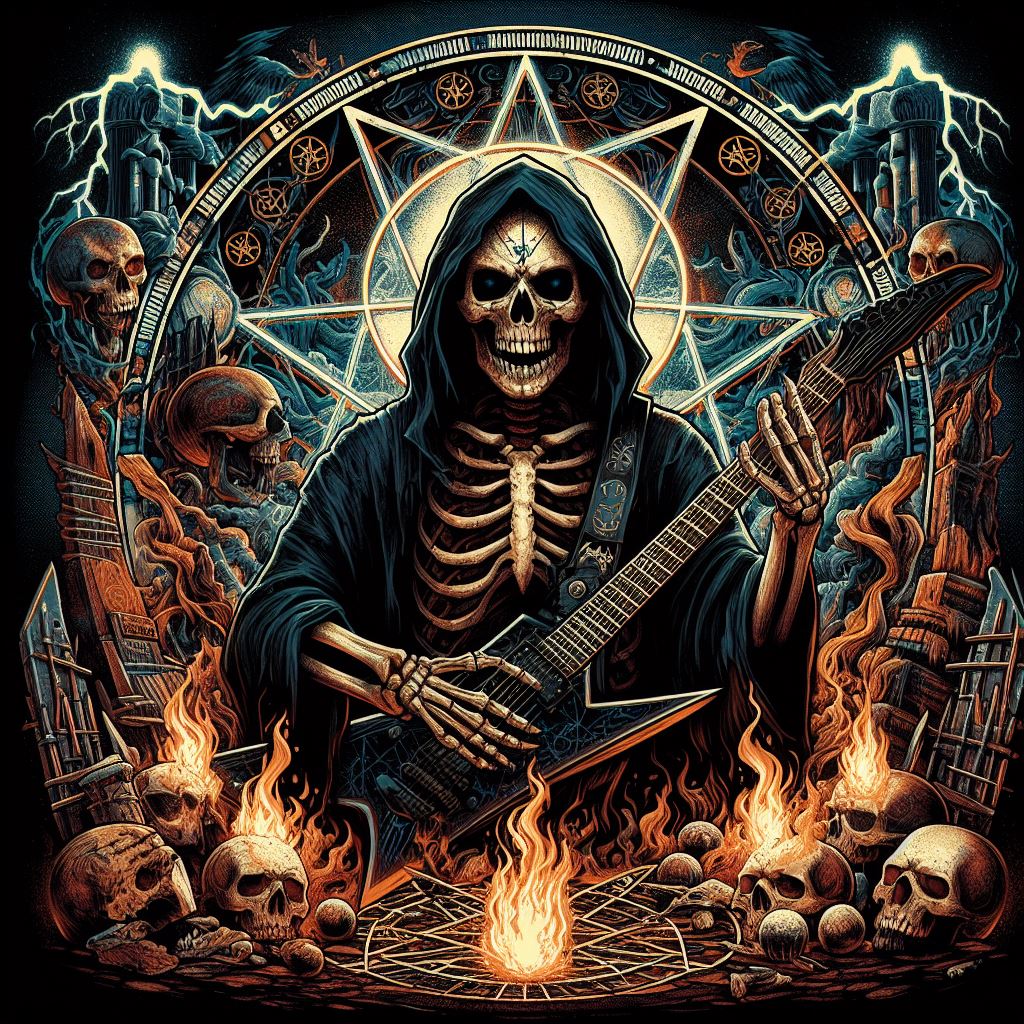Venom, the English heavy metal band hailing from Newcastle upon Tyne, rose to prominence in the early 1980s, leaving an indelible mark on the landscape of extreme metal. Their sound, a potent brew of raw aggression, satanic imagery, and punk rock fury, would not only influence the burgeoning thrash and black metal scenes but also lay the groundwork for countless subgenres to come.
The band’s story begins in 1978 with a convergence of musicians from various local acts. Conrad Lant, a young bassist and aspiring metal mastermind (later known as Cronos), envisioned a band pushing the boundaries of heaviness. He joined forces with guitarist Jeffrey Dunn (later Mantas) and drummer Anthony Bray (later Abaddon) to form Venom.
Their early years were marked by a DIY ethos and a relentless pursuit of a sound unlike anything heard before. Venom infused their music with a faster tempo and a more aggressive edge than the dominant New Wave of British Heavy Metal (NWOBHM) bands of the time. Lyrically, they delved into blasphemy and the occult, a stark contrast to the fantasy-oriented themes prevalent in metal.
In 1981, Venom unleashed their debut album, “Welcome to Hell,” on the independent Neat Records label. The album, with its now-iconic cover art featuring a grotesque demon, was a sonic assault. Tracks like “Angel Dust” and “Black Metal” showcased their ferocious riffing, Cronos’ snarling vocals, and Abaddon’s pounding drums. While commercially unsuccessful at the time, “Welcome to Hell” resonated with a growing underground metal scene hungry for something more extreme.
Their follow-up, 1982’s “Black Metal,” cemented Venom’s legacy. The album’s title track, with its infamously blasphemous lyrics and scorching guitar work, became synonymous with the emerging black metal scene. Songs like “Countess Bathory” and “To Hell and Back” further solidified their commitment to dark themes and demonic imagery. The album’s cover art, depicting a partially skeletal figure wielding a sword against a backdrop of fire and brimstone, became another iconic symbol of the genre.
Despite the controversy surrounding their lyrics and imagery, Venom’s influence spread rapidly. Their music resonated with a new generation of musicians yearning for a more aggressive and raw form of metal. Bands like Slayer, Bathory, and Mayhem drew inspiration from Venom’s sound, paving the way for thrash and black metal’s explosion in the mid-1980s.
Throughout the 1980s, Venom continued to push boundaries with albums like “Possessed” (1985) and “Calm Before the Storm” (1987). However, internal tensions and lineup changes began to take their toll. Mantas departed in 1984, replaced by Mike Hickey (later Mykios). Abaddon left in 1987, followed by Cronos himself in 1989.
Despite the band’s fracturing, Venom’s legacy remained secure. Their early albums became cult classics, inspiring countless future extreme metal acts. In the decades that followed, reunions and lineup changes continued, with Cronos leading a version of the band that carries the torch to this day.
Venom’s impact on metal cannot be overstated. They were pioneers of extreme metal, blending elements of punk rock aggression, heavy metal’s power, and a willingness to explore dark and controversial themes. Their music laid the foundation for a vast array of subgenres and continues to inspire legions of metalheads worldwide. Venom’s place in metal history is undeniable; they are the band that truly unleashed hell.

Leave a Reply
You must be logged in to post a comment.